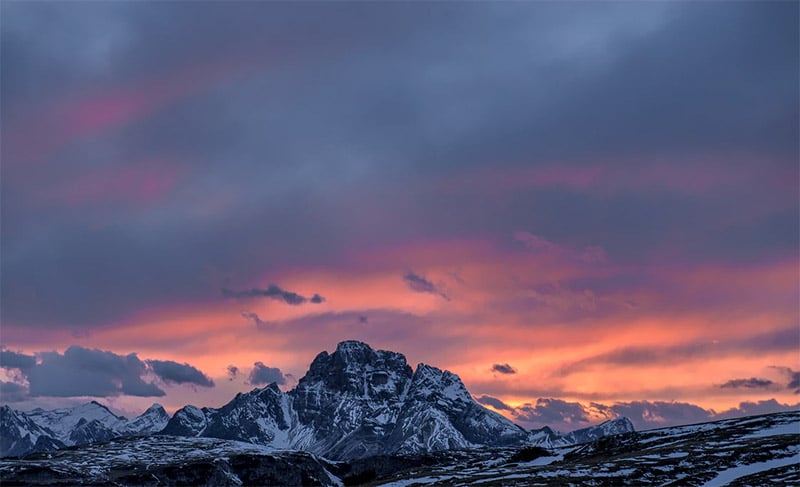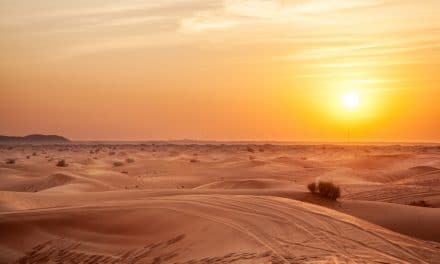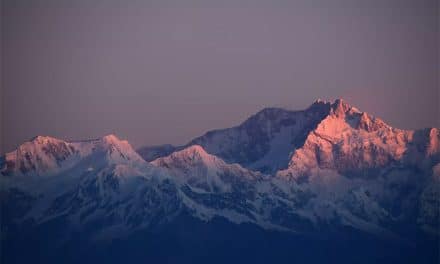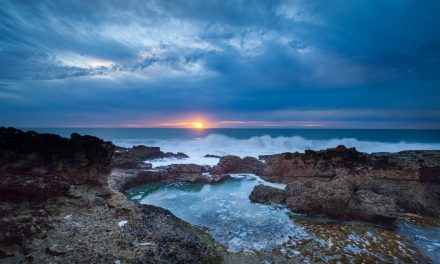With the increase in popularity of Instagram and Pinterest, as well as easy access to quality cameras (like the iPhone, for example), it seems like everyone is taking landscape photos these days.
Those of us who have an interest in landscape, nature, and travel photography see hundreds or even thousands of photos every single day. While technology provides many advantages for today’s photographers, the vast number of images out there makes it harder than ever to stand out.
If you’re looking to increase exposure for your own photos or to stand out from the crowd, here are 10 different approaches you can take that will help.
1. Plan and Scout Extensively
A big part of landscape photography comes down to being in the right place at the right time. Sometimes you may get lucky, but usually, this involves research and planning to put yourself in the best position to come away with an amazing photo.
One of the best ways to improve your photography is to step up your efforts when it comes to planning and scouting, and there are several different ways you can do this. First, you’ll need to find places to photograph. Our detailed location guides can prove to be extremely valuable in helping you to find great places to photograph.
Once you’ve found some places to photograph, your planning and scouting can involve things like using Google Earth to find the best vantage points, using The Photographer’s Ephemeris to track the sun and the moon, and checking weather forecasts to find the best days and time for your outings.
Scouting can also involve visiting locations and checking them out in person to find the best perspectives and any other valuable information that you can learn.
Putting more effort into planning will help you to increase your chances of being able to come away with great photos.
→ Related reading: 7 Sites and Apps for Scouting and Researching Photography Locations
2. Revisit the Same Locations
Most of us love to visit and experience new locations. That’s one of the fun parts of landscape photography, but there are also some very compelling reasons to go back and revisit the same locations that you’ve already photographed. Some of the most important reasons for revisiting locations include:
- As you become more familiar with a location, you’ll be able to photograph it more effectively.
- Every location will look different in varying seasons, weather, and time of day.
- Repeat visits give you a better chance of shooting in ideal conditions.
As you photograph the same locations repeatedly, you’ll usually find that your photographs get better. Many of the best landscape photographers visit the same locations multiple times to become intimately familiar with the area in order to get the best results.
3. Get Off the Beaten Path
Many people take the easy route when it comes to landscape and travel photography. This includes things like photographing from the road or main view points that are quick and easy to access. Sometimes those easy views provide a nice vantage point, but in many cases, you can find a better view with a little bit of extra effort. You may need to hike or explore to find the best views and angles, but it can be worth the effort.
If you’re only photographing from the same vantage points as most other people, your photos are likely to be very similar to everyone else. Making an effort to get off the beaten path will allow you to see and photograph things that many visitors will not experience, or to capture common sights from a different angle or perspective.
4. Photograph at the Right Time of Day
Lighting is a huge part of landscape photography, and the time of day is probably the biggest factor in the lighting that you will be working with. It’s no secret that the best lighting usually occurs around the times of sunrise and sunset and that harsh mid-day sun can be very challenging for photographers.
Be sure that you are making the most of the best light by planning your outings around sunrise and sunset. If you’re going to be photographing several different places throughout the day, think about the spots that you want to prioritize. Would they be best if photographed around the time of sunrise or sunset?
This also goes back to the first point about planning. You can check The Photographer’s Ephemeris to see how the sun will line up with the spot that you want to photograph, as well as the precise time of sunrise or sunset.
5. Shoot in the Right Weather Conditions
Weather is also a huge factor that will have a big influence on the results of your photography. Your planning and scouting can help you to determine the ideal conditions for a particular spot, and if you have some flexibility, you can plan your outings for days and times when the weather is likely to be ideal.
Different locations and different types of shots will be ideal in different types of weather. For example, a cloudy and overcast day will not be great for your sunrise or sunset photos, but it could be perfect weather of photographing in the forest or for capturing images of a waterfall.
The key is to match up the weather conditions with the types of photos that you’re shooting. There is something you can photograph in any weather condition, so you’ll need to work with the weather that is available to you and adjust your shooting accordingly.
→ Related reading: Shooting Landscapes in All Weather
6. Embrace “Bad” Weather
Some of the conditions that most people would classify as bad weather can actually be perfect for photography. Rain, storms, snow, ice, and dense fog can all bring plenty of great opportunities for photographers.
Photographing in these conditions can bring additional challenges (and sometimes require extra safety precautions as well, but the rewards can be well worth the effort.
If you want to capture powerful photos that stand out, learn to embrace bad weather and make the most of these opportunities.
→ Related reading: Making the Most of Bad Weather
7. Develop Your Personal Style
One of the best ways to create photos that stand out is to develop your own personal style that can be seen throughout your work. As viewers become more familiar with your work, they’ll be able to recognize your photos based on your style.
This is something that takes time and effort to develop, but it’s worth some effort as it can have a big impact.
8. Pay Attention to Small Details
When most of us think about landscape photography, epic scenes of vast landscapes come to mind. It could be an impressive mountain range with a lake in the foreground or a huge canyon in a wide-open desert landscape that seems to go on forever.
These types of scenes are certainly capable of creating epic landscape photos, but you should also pay attention to the small, intimate details of a scene. Closeup photographs that showcase detail can be extremely artistic and powerful. This could include blurred rushing water, natural patterns in plants, small details of rocks, and much more.
If you’re used to photographing the vast, epic scenes, putting more emphasis on the small details will take some practice, but it’s mostly about how you look at a scene and how you find the details that you want to photograph. Instead of only looking at the bigger picture, make an effort to pay attention to the small details and look for opportunities.
→ Related reading: 7 Tips for Focusing on Fine Details in Your Landscape Photography
9. Specialize in Your Local Area
Earlier, I mentioned the benefit of revisiting the same locations. One of the nice things about specializing in landscapes of your local area is the fact that it is so much easier, cheaper, and more convenient to visit and photograph these places over and over. By specializing in your local area, you’ll get to know your favorite spots extremely well, which gives you the best opportunities to come away with outstanding photos.
Specializing also helps your photos to stand out from enhanced branding. You can position yourself as an expert or authority.
10. Master Post Processing
Post processing and photo editing is a big part of digital photography. You won’t be able to turn a bad photo into a good photo, but if you understand how to use software like Lightroom, you can transform good photos into great photos.
If your post processing skills are holding you back, there are a few things that you can do:
- Use presets like our Landscape Legend Lightroom Presets to make it easier to get great results and save time.
- Take a course to improve your skills. Our Lightroom for Landscapes video course was created specifically to teach the aspects of post processing that are most relevant to landscape and nature photographers.
And if you’re interested in both the presets and the course, be sure to check out our Lightroom Bundle.
Photo license link: Unsplash License















